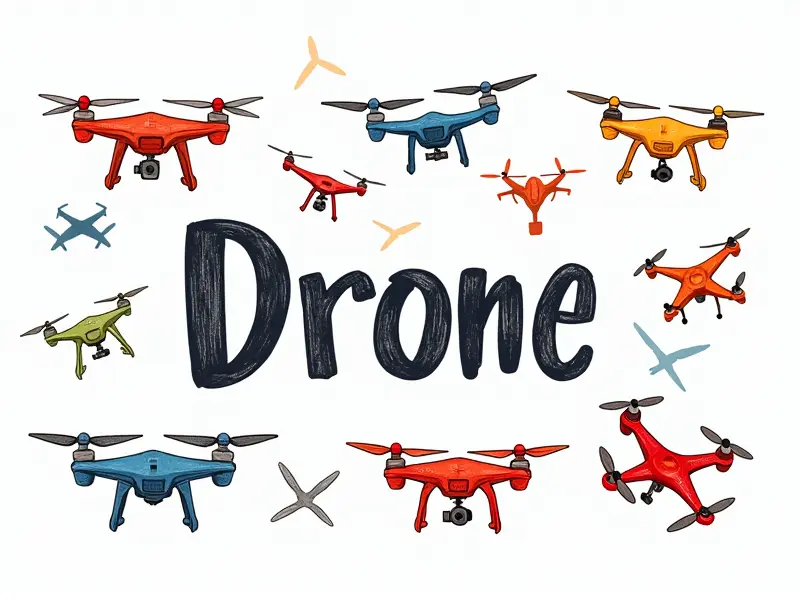What is a drone?

What Exactly Is a Drone?
A drone, also known as an unmanned aerial vehicle (UAV), is an aircraft without a human pilot on board that can be controlled remotely or flown autonomously through software-controlled flight plans in its embedded systems. Drones are used for various purposes such as surveillance, delivery services, photography and videography, agriculture, and more.
Understanding Drones: The Basics
The concept of drones has evolved significantly over the years. Initially developed for military applications, they have now become a staple in civilian life. A drone consists of several key components including:
- Frame: The structure that holds all other parts together.
- Motors and Propellers: Provide the necessary lift and movement.
- Battery: Supplies power to the motors and onboard electronics.
- Flight Controller: Manages flight stability, navigation, and communication.
Beginner's Guide to Drones
If you're new to drones, it’s important to understand their capabilities and limitations. Key aspects for beginners include:
- Type of Drone: Choose between fixed-wing or multirotor models.
- Purpose: Determine whether your drone will be used for photography, racing, inspection, etc.
- Budget: Set a realistic budget based on your needs and preferences.
Unveiling the World of Drones
The world of drones is vast and constantly evolving. From recreational use to professional applications, drones serve various industries such as:
- Agriculture: Monitoring crop health, spraying pesticides.
- Construction: Site surveillance, 3D mapping.
- Media and Entertainment: Cinematography, live streaming events.
Everything You Need to Know About Drones
To fully understand drones, it's essential to know about their technical specifications, legal regulations, and potential uses. Here are some critical points:
- Technical Specifications: Payload capacity, flight time, range.
- Regulations: FAA rules in the United States or similar governing bodies elsewhere.
- Potential Uses: Beyond photography and videography.
Introduction to RC Aircraft and Drones
Remote-controlled (RC) aircraft, including drones, offer enthusiasts a unique way to explore aviation. While traditional RC planes require more skill and space for flight, modern drones are easier to operate and maintain.
Key Differences Between RC Planes and Drones
- Mobility: Drones can hover in place while RC planes need constant forward motion.
- Stability: Drones are more stable due to advanced flight controllers.
Exploring the Functionality of Drones
Drones function through a combination of hardware and software. The primary components include:
- Sensors: Gyroscopes, accelerometers, GPS modules.
- Communication Systems: Wi-Fi, Bluetooth, or dedicated radio frequencies.
Diving Into Drone Technology
The technology behind drones is fascinating. Here are some key technological advancements:
- Autonomous Flight: Drones can fly predefined routes without human intervention.
- AI and Machine Learning: Enhancing navigation, obstacle avoidance, and data analysis.
The Ultimate Guide To Drone Basics
This guide covers everything from choosing the right drone to understanding its capabilities. Whether you're a hobbyist or professional, this information will help you get started with drones effectively:
- Choosing Your First Drone: Consider your budget and intended use.
- Maintaining Your Drone: Regular checks on batteries, propellers, and sensors.
Introduction to Drone Technology
Drones incorporate sophisticated technology that enables them to perform complex tasks. Understanding this technology is crucial for anyone interested in drones:
- Sensor Fusion: Combining data from multiple sensors for accurate navigation.
- Battery Management Systems (BMS): Optimizing battery performance and longevity.
Drones Explained in Simple Terms
To put it simply, a drone is an aircraft that can fly without a human pilot on board. It uses technology to control its flight and perform tasks such as:
- Photography: Capturing stunning aerial shots.
- Data Collection: Gathering information for various industries like agriculture or construction.
Conclusion
Drones are versatile tools that have revolutionized many fields. Whether you're a hobbyist looking to capture breathtaking footage or a professional seeking innovative solutions, understanding the basics of drones is essential. From choosing the right drone to navigating regulations and technology, this guide provides a comprehensive overview to help you get started on your journey with these amazing flying machines.

